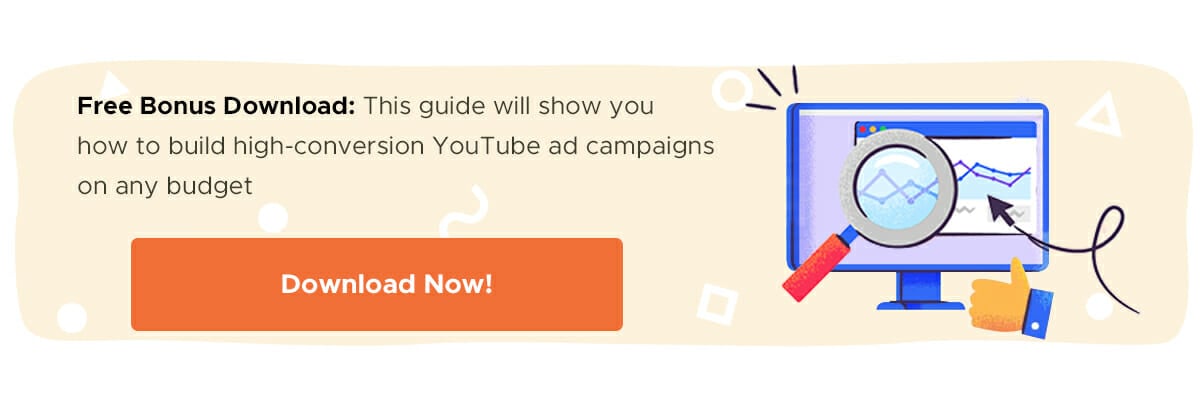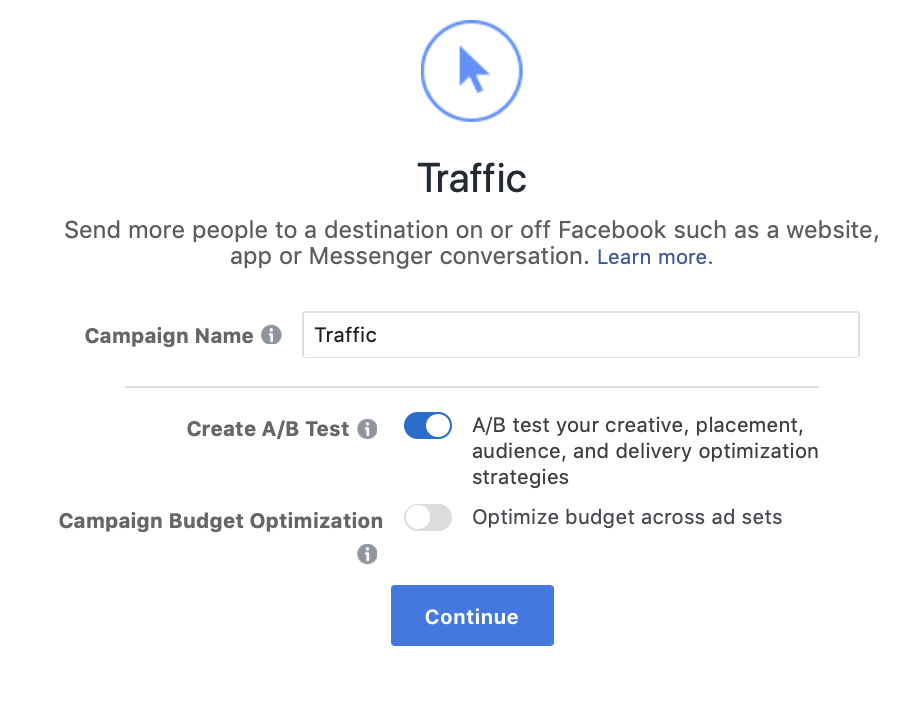Creating a successful, profitable Facebook Ad campaign is a little like baking: all the ingredients need to come together just right if you want everything to turn out well in the end. You need the right audience targeting options, the right placements, the right bid, the right offer, and the right message.
There are plenty of guides out there that can tell you exactly who you should be targeting and when, what placements you should choose, and how to stay competitive. This article is all about the last part of the equation: how to craft the perfect message and write it in a way to ensure that your ads convert.
Many people think that the image is the most important part of an ad campaign, but images only attract attention and interest; it’s the ad copy that details the offer and explains exactly why your audience needs to take you up on it immediately. The copy is what’s persuasive, and it will be what gets the click and gets the sales.
In this post, we’re going to look at 8 specific Facebook Ad copywriting tricks that will help you maximize conversions consistently across your campaigns.
1) Understand Your (Very Segmented) Audience
The first step to writing great copy is having a firm understanding of who your audience is and what their relationship with products or services like yours is. This will make it possible to write highly targeted, very relevant copy that resonates with them.
Let’s say, for example, that I saw an ad featuring grammar-correcting software. I’d immediately think “I’ve got spellcheck on Google Docs and the rest of it I know already.” But if I saw an ad for the same tool promising to speed up my output as a writer by eliminating the proofreading portion of my work, it might have my attention:
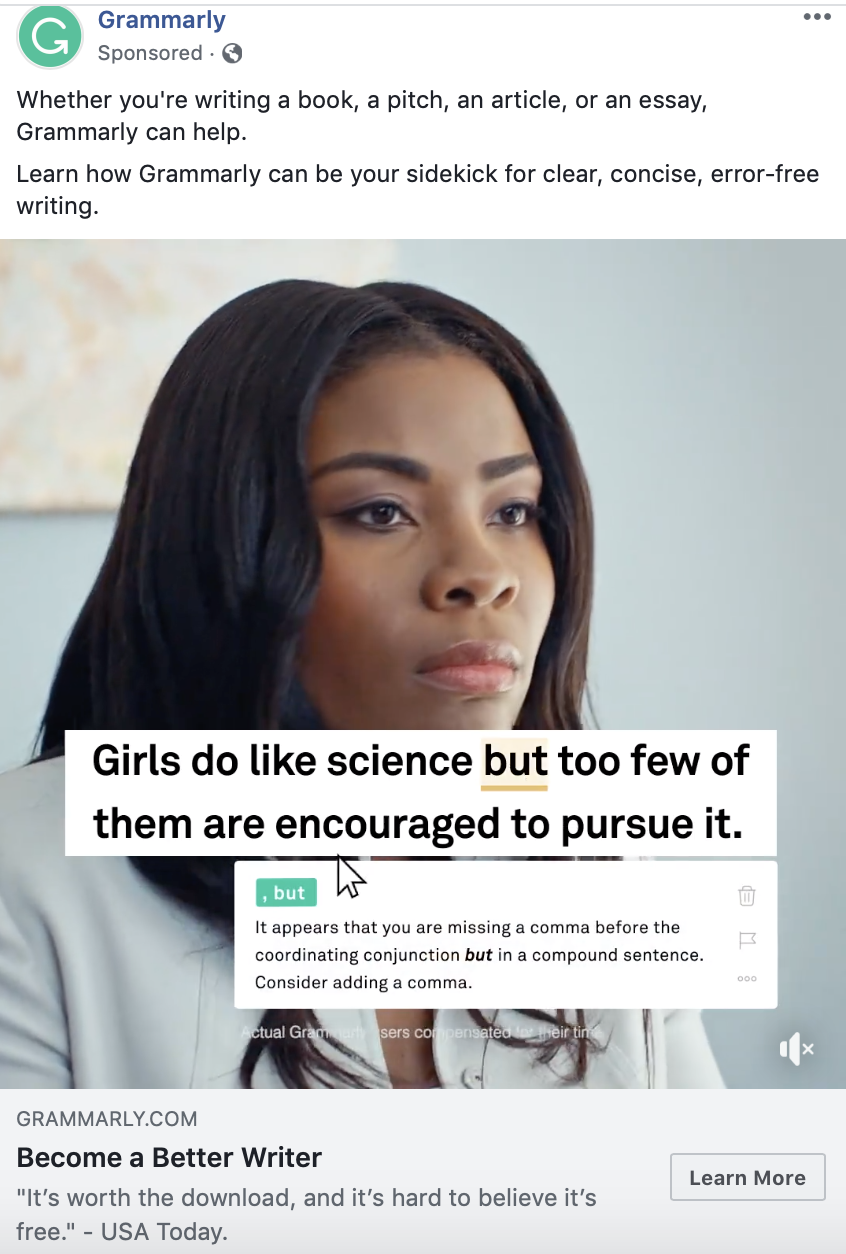
It is imperative to understand what motivates your audience and why they need a product or service like yours. It can also be helpful to understand interests and niche behaviors. Last week I saw a food delivery ad promising:
“Winter is coming… and so is your pizza.”
They knew that a large portion of their customer base was ready for the Game of Thrones premiere and found a clever way to incentivize purchases.
The more you understand your audience (and in many cases, the more segmented the audience), the better the ad – at least when it comes to Facebook Ad copy.
Dive Deeper: Attract the Right Prospects With Buyer Personas (Includes Step-by-Step Templates!)
2) Focus on Pain Points & the Emotions They Cause
Everyone has problems ranging from tiny to monumental, but with the right emotional messaging in place, even tiny nuisances can feel like enormous, overwhelming disasters that need to be solved immediately (which is how I got an “avocado saver” off a Facebook Ad that doesn’t work any better than the Tupperware I’d been using before).
Make sure that your ad copy focuses on pain points and at least hints at the emotions they cause. Even if the pain points are barely painful, ask yourself what problems you’re solving and what market you’re serving:
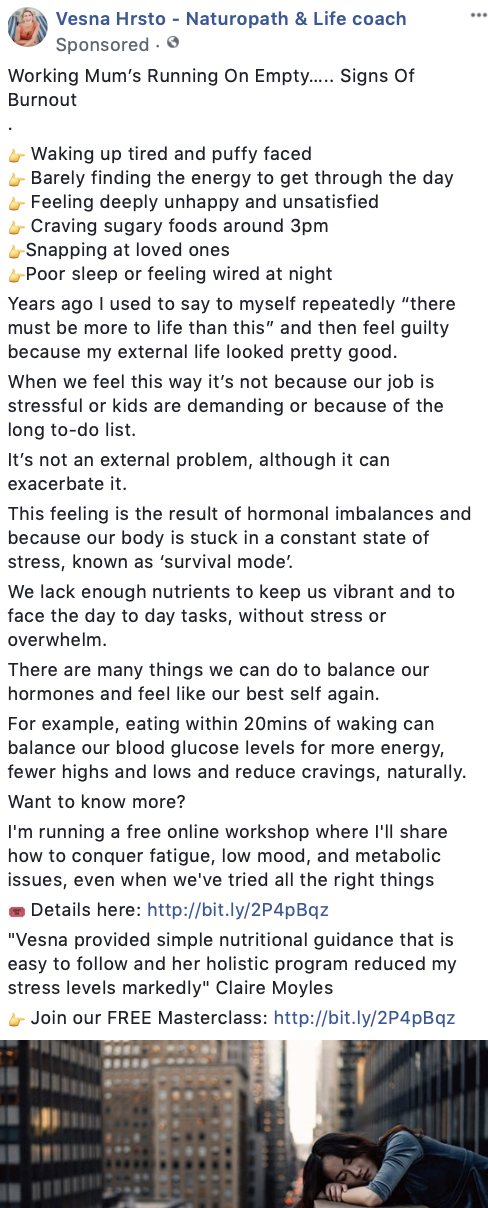
For instance, are you selling costume jewelry for cheap prices? Talk about how people can finally get beautiful, decent-quality jewelry at affordable prices, because this will hit home to your target audience who can’t afford to drop a month’s salary on a diamond tennis bracelet.
If you’re trying to advertise your air conditioning services, make sure you talk about the risk of an old unit blowing out and how it always happens on the hottest week of the summer, leaving you to sweat through sleepless nights and wondering if you’ll ever feel cool again.
These are emotional messages and by centering a customer’s pain point, you can then immediately follow up that thought by presenting your product as a solution. This last part is important, and it’s where a lot of advertisers and copywriters make the mistake of forgetting to hammer in the point about how they can fix their customer’s problems.
Instead of just saying:
“Hate that humid, summer-heat feeling? AC units always burn out on the hottest week of the year, and it can take up to two weeks to get on the schedule for someone to fix it.”
Make sure you’re finishing it off with:
“We can help with that. Call us for a free estimate about how our Turbo Deluxe model is more reliable, with a two-year, no-burnout-guarantee or your money back, and same-day service.”
That last part of the equation is essential.
Emotional ads are pretty much always a good call for B2C ads, though they can work just as well on B2B ads, too.
Learn More:
3) Write Mobile-Optimized Headlines
In past years, advertisers were focusing predominantly on desktop users, knowing that these people were more likely to convert.
This is a changing trend, however, especially since 88% of Facebook users regularly access the platform via their mobile device. Mobile ad revenue and engagement continues to climb, so you need to consider mobile users when writing your ad copy (unless you’re writing exclusively for desktop-only placements). Since focusing on desktop can isolate a large percentage of your target audience, it’s often best to just mobile-optimize your ads and go from there.
Short headlines are an important part of those mobile-optimized ads. You can get 52 characters under the current ad formatting before the headline gets chopped off with an ellipses, and since the headline plays a major role in ad copy, you don’t want this to happen.
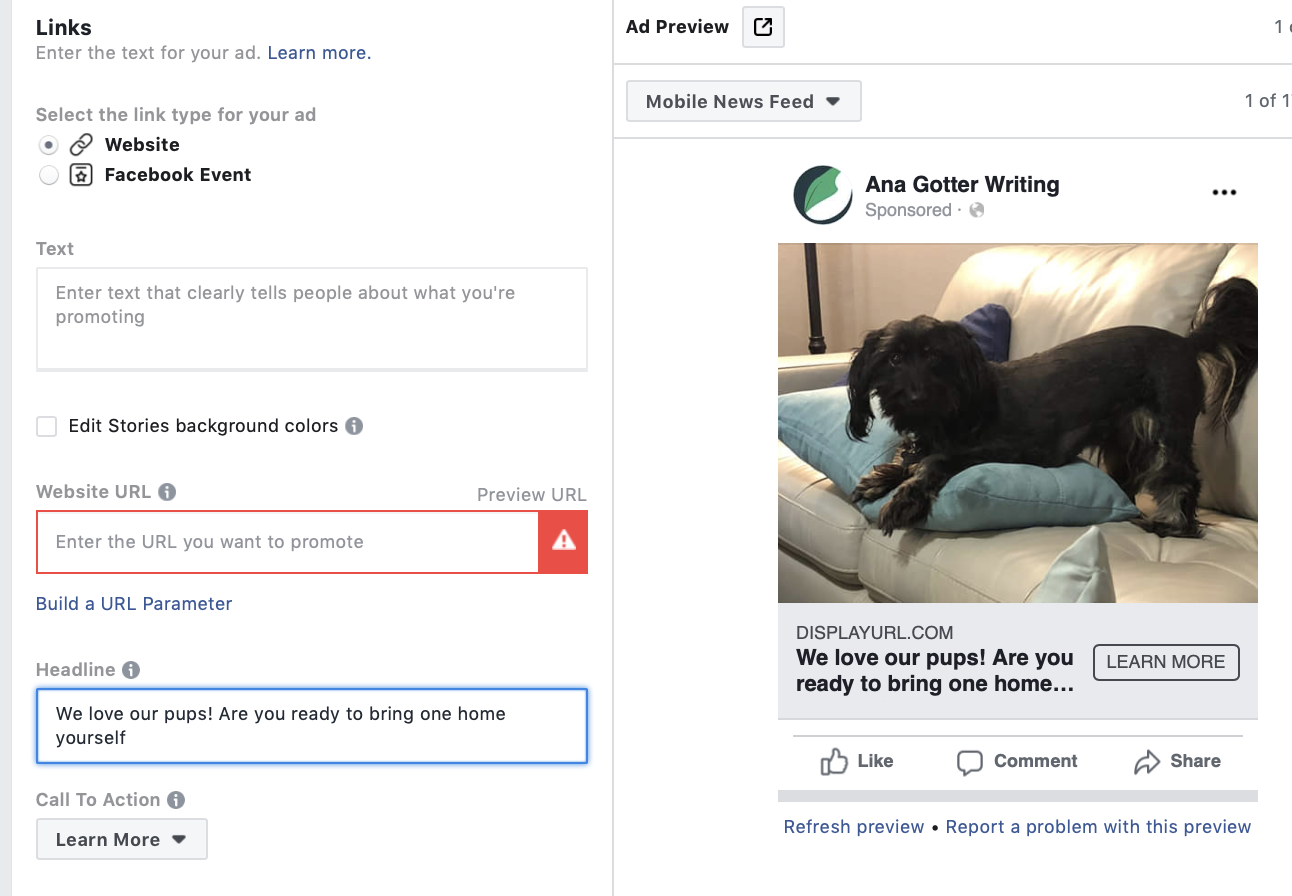
Keep the headlines short and make sure that they’re impactful. Think of this as your chance to create clickbait-worthy titles (but not actual clickbait!) to catch people’s attention.
When it comes to headlines, you can stick to a few simple formulas if you’re feeling stuck and adapt them as necessary. They are:
- Adjective. Adjective. Adjective. (Delicious. Decadent. Still healthy.)
- Are you tired of/frustrated with [pain point]? (Tired of not sleeping well?)
- General call out to customers. (You asked. We delivered.)
- Specific feature statement. (Prevent package theft, as seen in the example below).
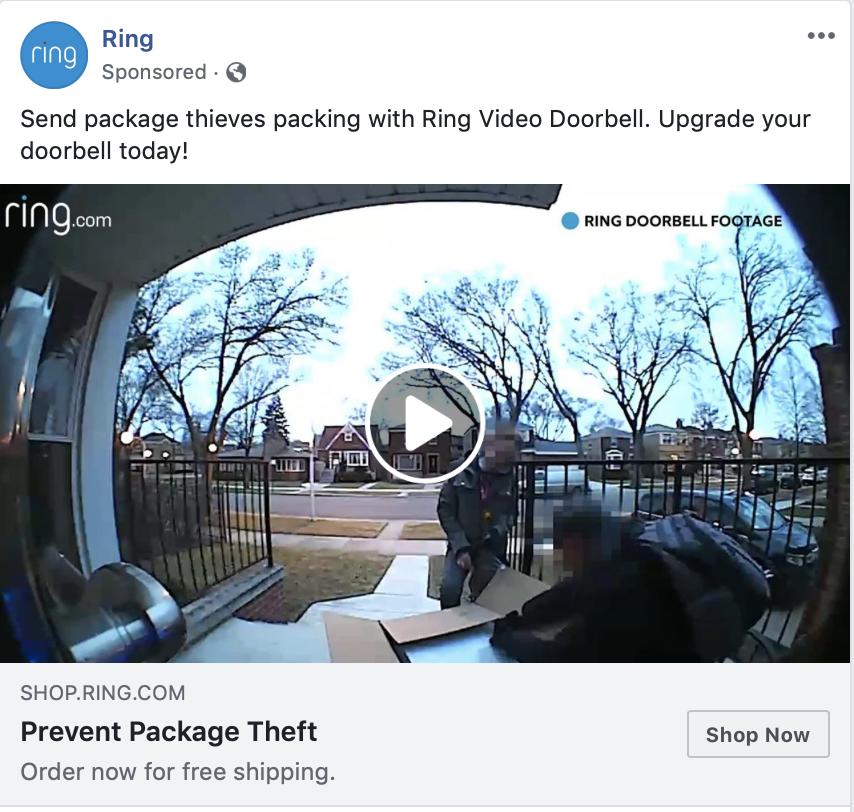
Dive Deeper: How to Produce Paid Facebook Video Ads for Mobile Like a Pro
4) Tell a Compelling Story
I’ve said it before, and I’ll say it a million times more: Stories are incredibly powerful.
Stories are emotional, which already ties in well with the ad strategies discussed above, but they’re also memorable and specific and relatable. These are crucial pieces in the advertising puzzle that can set off buying triggers in customers during the research and consideration stages.
And when it comes to storytelling in Facebook Ads, you can stay simple, but the more specific you get, the better. Tell stories about individual customers, explaining how they’ve benefited from your product. Or share what made your company’s founder decide to start the brand.
Let’s look at an example. Raddish Kids has a meal subscription box for kids, but this ad (it features a client review, which we’ll discuss shortly) tells the highly specific story of a single parent and their 9-year-old daughter, Ella:
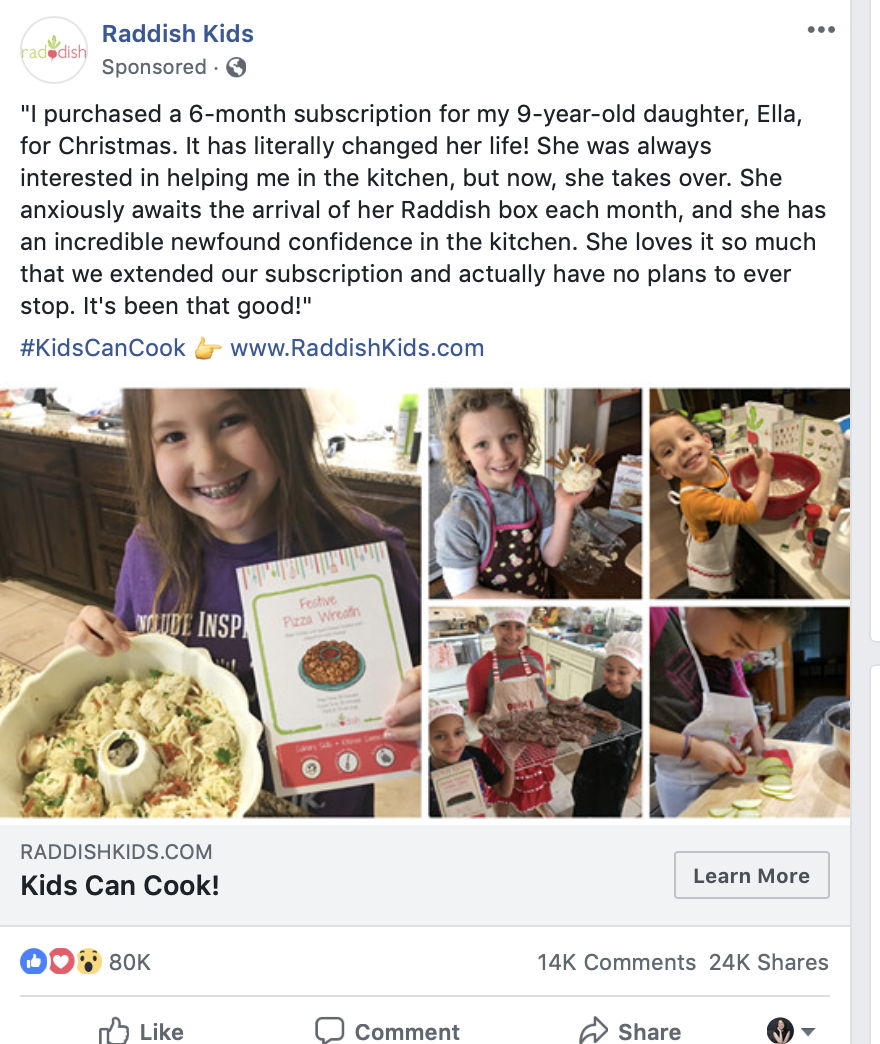
They don’t just say:
“Hey, she cooks.”
They’re talking about how:
“she anxiously awaits the arrival of her Raddish box”
And:
“she has incredible newfound confidence in the kitchen”
Parents can relate to how their kids gain confidence with new skills, and see how this could impact their own families.
Stories sell, and even if users don’t click or convert the first time they see your ad (which, let’s be real, they’re statistically unlikely to do), they’ll remember the story you told and, hopefully, convert in the future.
5) Turn a Testimonial into Your Ad Copy
If you are struggling to get your ads moving, you should create several campaigns dedicated to highlighting real customer reviews. Notice that I stress real – customers can tell when a review is written by the company itself, no matter how clever you think you’re being.
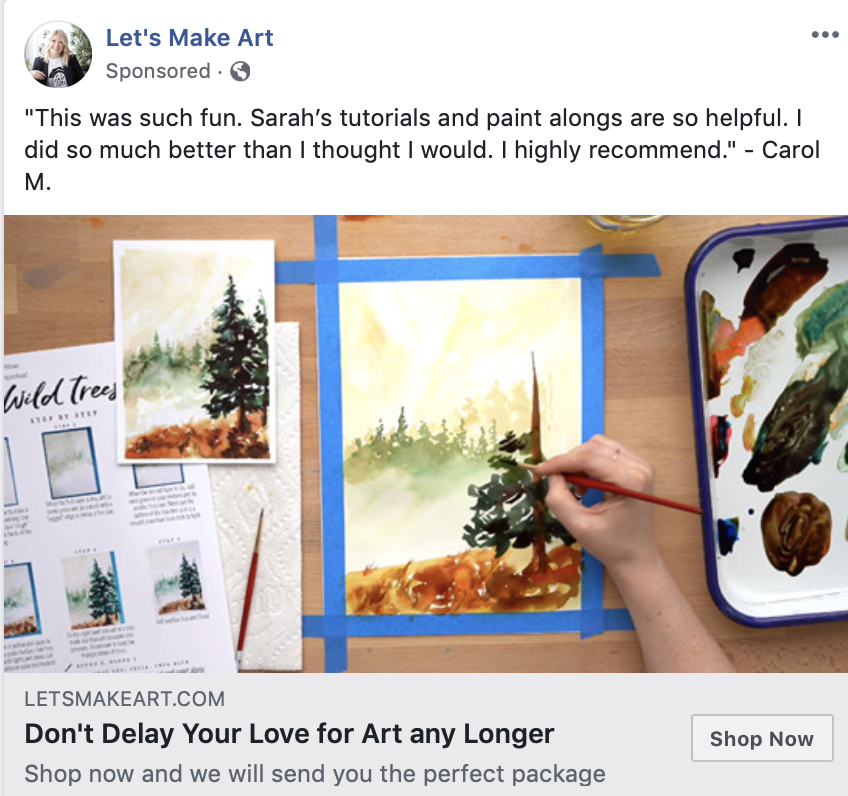
An incredible 97% of consumers say that online reviews will impact their buying decision. Facebook Ads can garner plenty of social proof from happy customers, but why not start strong right off the bat by featuring the testimonial in your ad text?
In this case, I highly recommend split testing several different reviews and see which gets you the most results. In many cases, it will provide valuable insight into a customer’s needs. If one review is talking about how comfortable your clothes are but doesn’t convert as well as the review from a woman overjoyed that you have plus sizing that finally fits her, then you’ve found a big pain point that you should exploit in other ad campaigns.
Learn More:
6) KISS: Keep It Skimmable, Stupid
Use simple, basic sentence structures that are easy for your readers to follow. This makes your ad “skimmable” and it prevents the content from looking too overwhelming.
You should keep the subject of the ad simple, too. Give users just enough information to get them to click or convert, but make sure that you don’t have a ton of unnecessary information in there.
In the example below, they just say “World’s Lightest Frame.” They don’t go on and on about actual qualifications for how they achieved this title. It might be interesting, but it adds unnecessary text to the ad that takes away from its purpose, so they kept it simple instead.
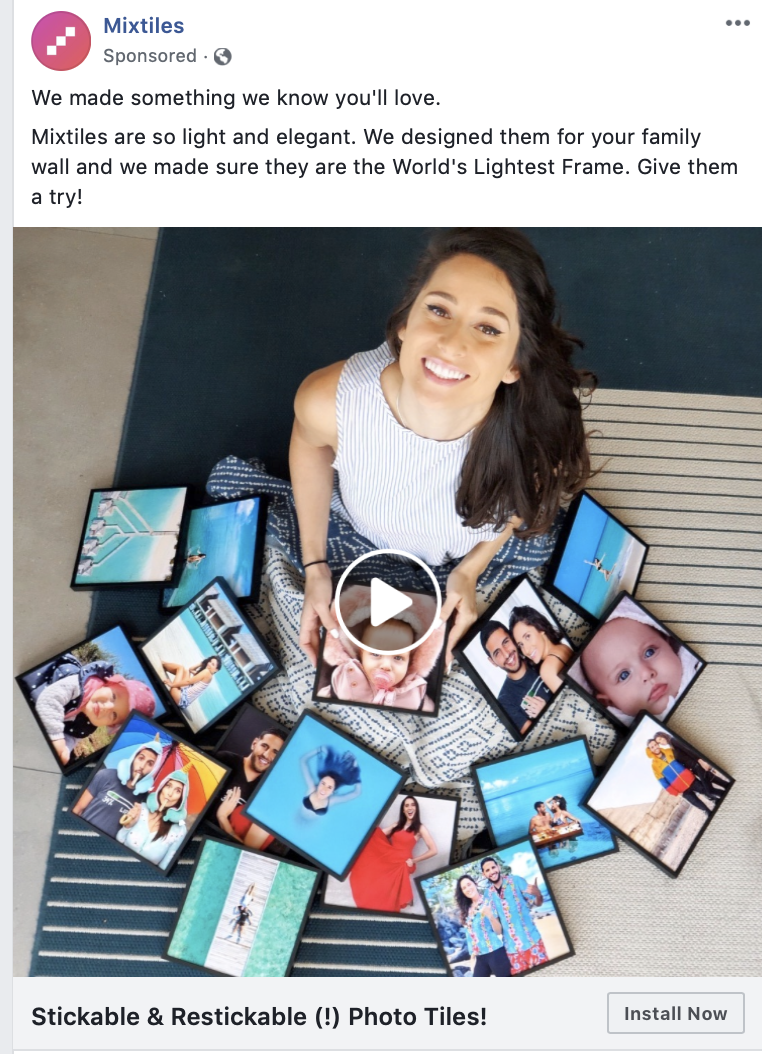
This is another good example of a short, sweet and to the point ad campaign. Some products and services will need a lot more explanation, but if you’ve got something simple to sell, consider sticking to the facts like Tieks:
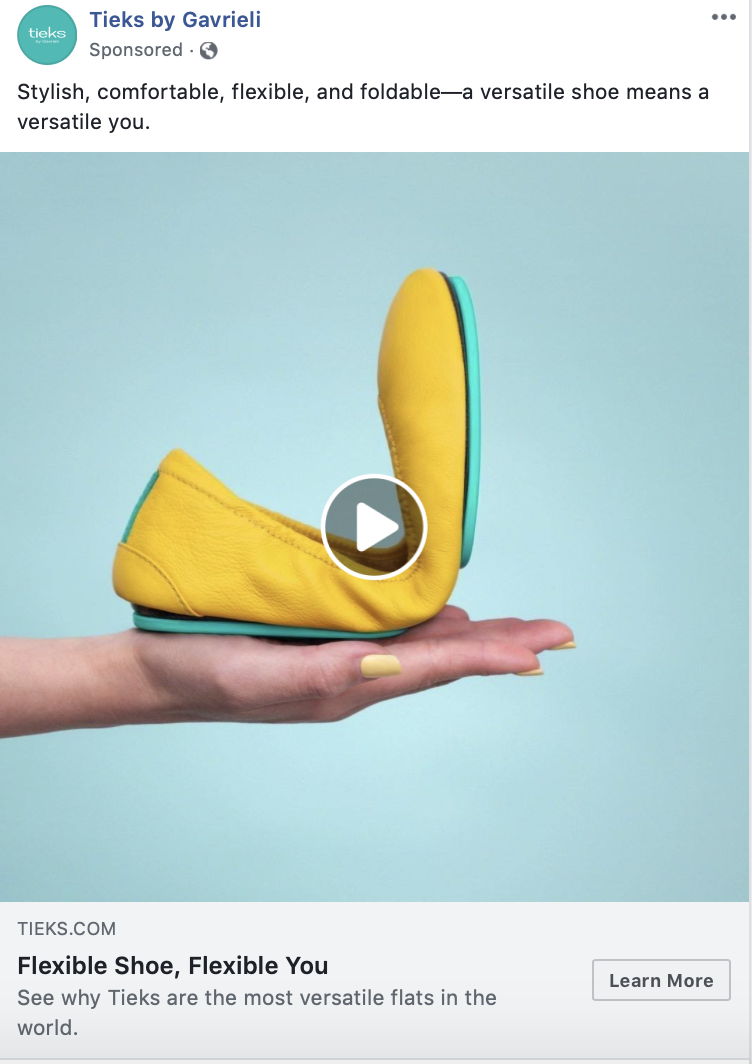
This does not mean that you should automatically discount long-form copy, which can be effective, but you need to keep that simple, too. Long-form copy is more difficult to write, because the balance of enough text to be useful without too much to distract can be hard to strike. Make sure that if you do opt for long-form ad content, you immediately start off with a big-impact statement, like “I Build Superheroes” in the ad below:
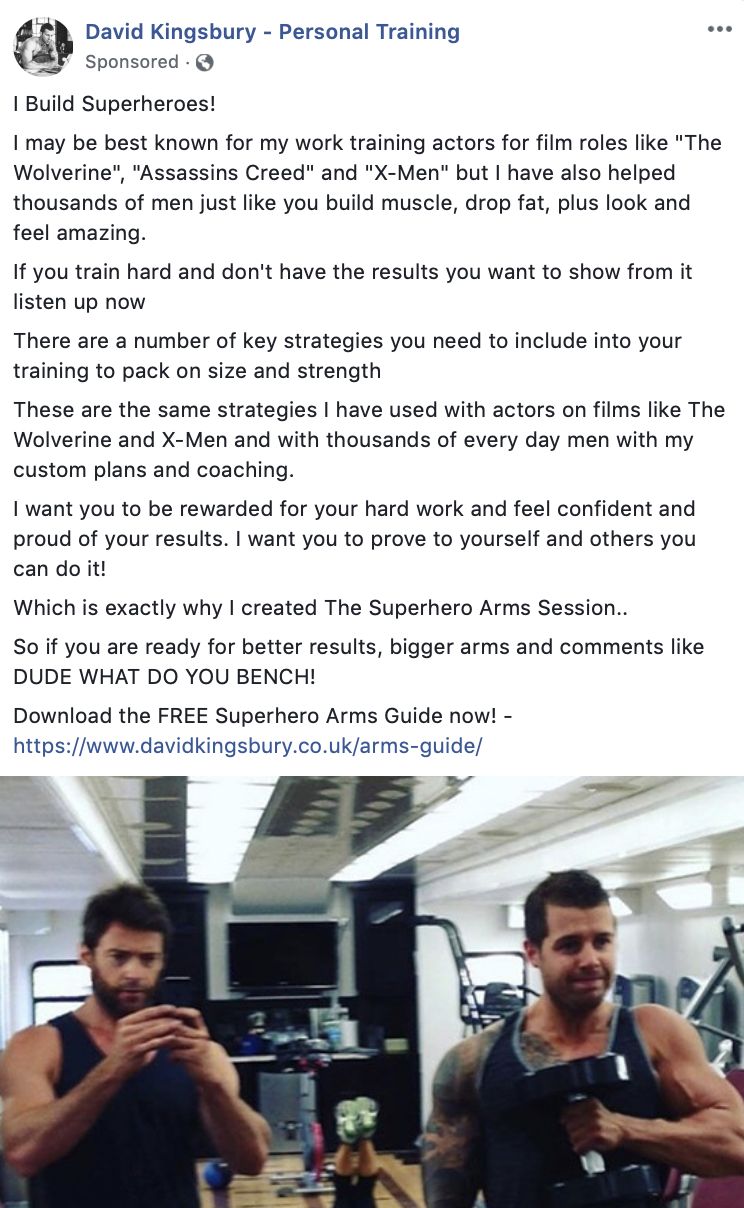
7) Overcome Objections in Your Ad Copy
Many people will immediately ask themselves “What’s the catch?” as soon as they see your ad. They can’t help it; we’re all naturally skeptical, and consumers have gotten smarter and more discerning over the years, so they’re less inclined to believe you straight away.
This means that overcoming objections in your ad copy is a good call. Do your prospects dislike that your competitor’s straighteners break their hair and cause split ends, but your brush does no damage? Mention that!
The overcoming objections strategy is a great way to put customers’ fears at ease (before they can even ask what the catch is), address pain points, and make yourself look better than your competition without even naming them.
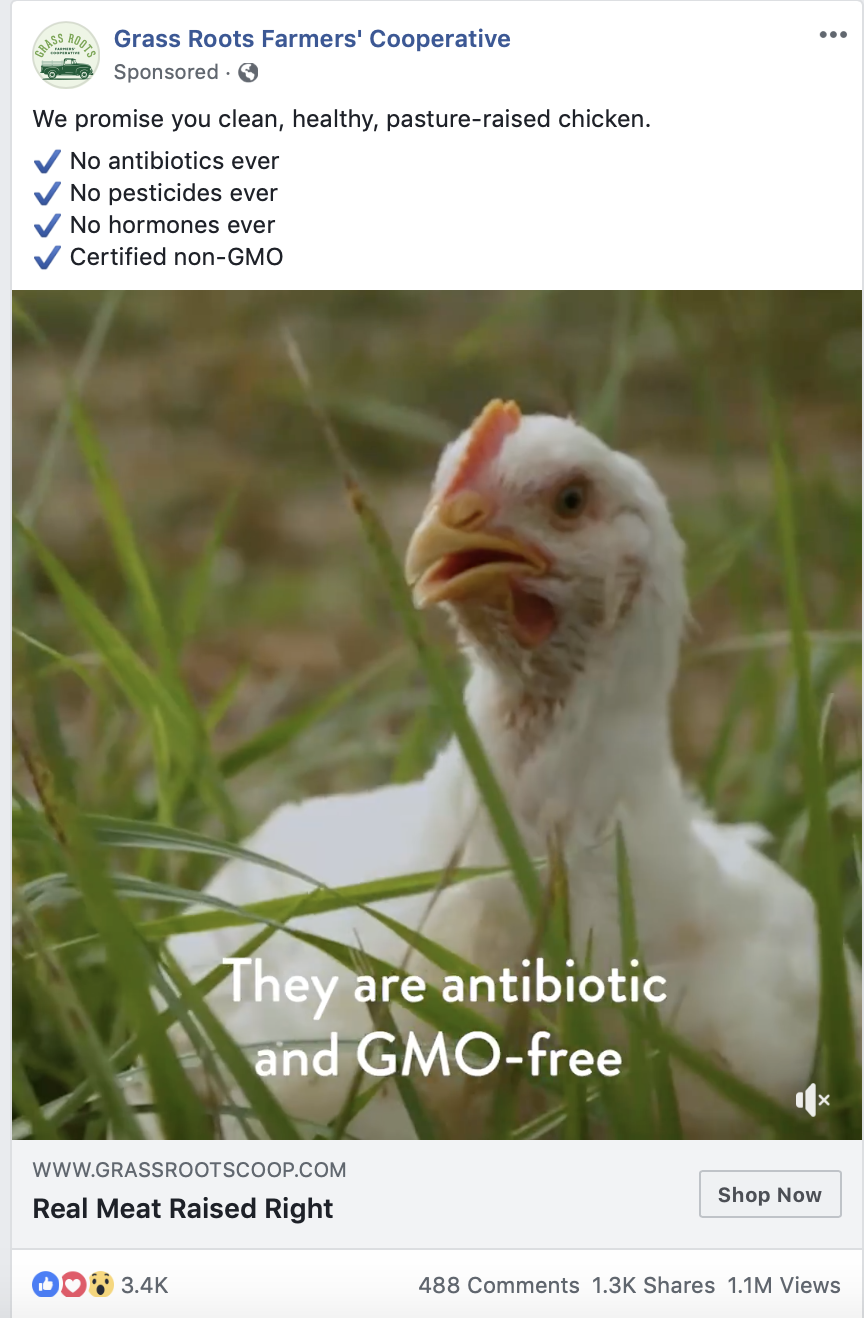
Learn More:
8) Test, Test and Test Some More
When I sell ad copy packages to my clients, I typically don’t sell single ads. Instead, I sell sets of copy, which include multiple headlines and variations of ad text that all align under a single strategy or pain point, but use different styles, messaging, stories and even offers to see which copy formats work best. Some may have bullet points, others may be two lines, and another may be six paragraphs.
This is valuable because Facebook audiences can be fickle, and the only way to find out what yours wants to see is by testing different strategies, different styles, and different offers on a regular basis.
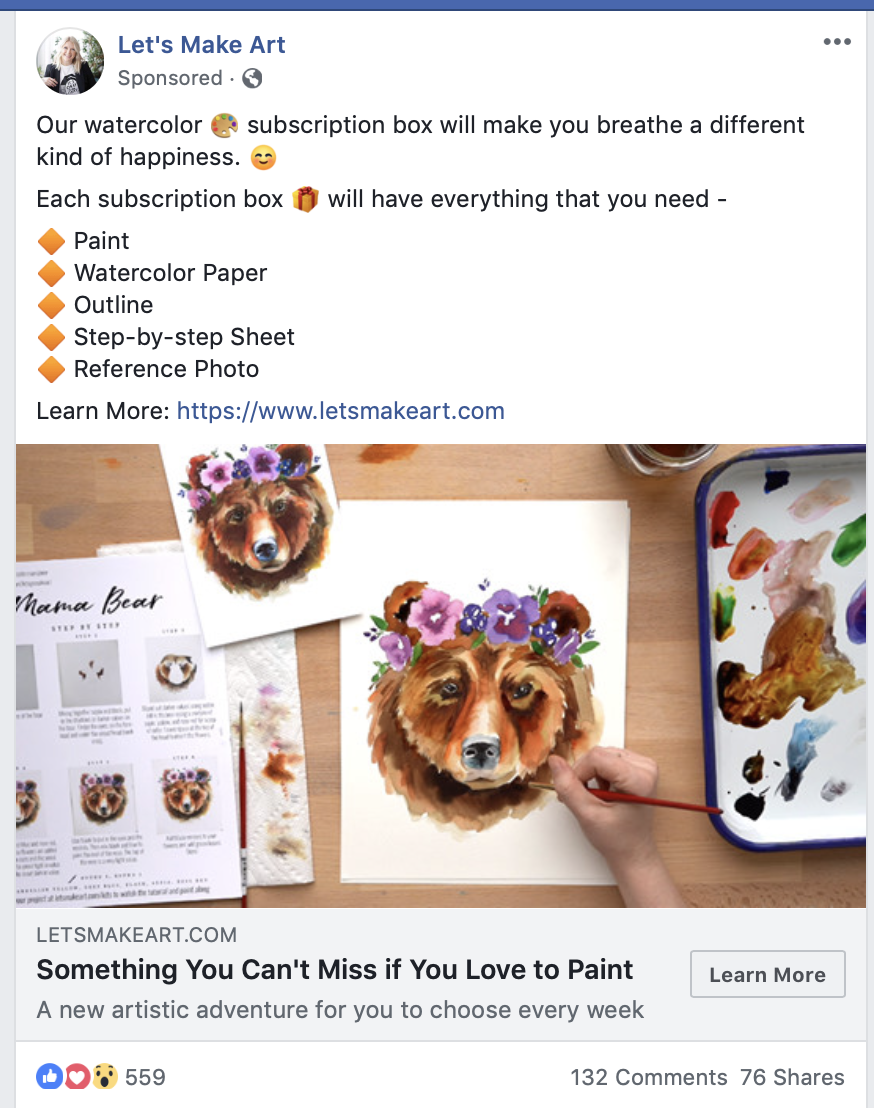
Don’t overlook split testing, even though it’s more of a financial and time investment, because it will have a huge impact on your profitability moving forward. You don’t ever want to settle for “good enough,” after all. I’ve seen “good enough” campaigns that turned into hugely successful campaigns, increasing conversion rates by up to 35% – after dedicated split testing to discover what worked best for each audience.
And now Facebook Ads makes this easy! You can select the Facebook Ads native split testing option, and then choose to test multiple variations of ad copy.
Conclusion
When you’re approaching Facebook Ads copy, it’s important to remember that it’s unlike other ad types. Google Ads typically focuses on highlighting the features that are most likely to get users to click, sometimes without any complete sentences, because users are searching for that product or service instead of just seeing it show up.
You need to consider that your ad is an outbound marketing technique and that it therefore needs to captivate users enough to draw them in. The right copy will be engaging enough to grab their attention and persuasive enough to get them to click, and these 8 tips can help you write it.
